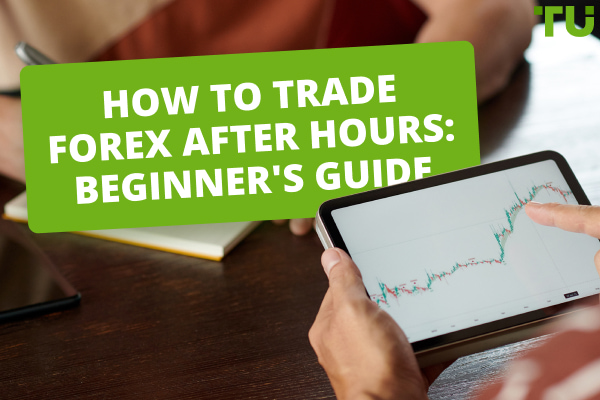Top 6 best volume indicators in trading
Best volume indicators in trading:
Volumes — shows activity of the market players and the number of transactions performed by them;
Money Flow Index (MFI) — shows the rate at which the money flows into and out of an asset;
On Balance Volume (OBV) — compares the current and previous closing prices;
Accumulation/Distribution Indicator (A/D) — developed based on the On Balance Volume;
Volume Weighted Average Price (VWAP) — one of the derivative indicators of moving averages that takes into account trading volumes;
Chaikin Oscillator — a derivative of A/D indicator, which uses the values of moving averages.
Market volumes are often ignored by novice traders; they are rarely used in trading strategies, and therefore, an impression is formed that they are not necessary, as trend indicators and oscillators complement each other well. An understanding that this is a delusion comes with experience. There is a notion of Volume Spread Analysis (VSA) in professional trading, which stands apart from classical technical analysis and chart systems of Price Action patterns. Some of the ideas of the non-indicator VSA method are reflected in market volume indicators.
In this review you will learn:
What volumes are in trading and why they need to be considered in strategies.
What indicators are the best for assessing the volumes.
What similar instruments are; their pros and cons.
The notion of market volumes in trading
The market price changes when the supply/demand balance shifts to one side. For example, there are buyers who are prepared to buy 10 units of an asset at USD 100. However, the sellers are prepared to sell only 3 units for this price. The sellers then raise the price to USD 120. For this price, the buyers are prepared to buy only 5 units. The sellers raise the price to USD 130, and the buyers are ready to buy only 3 units of an asset. The market is in balance.
Question. Do you think the trading volume matters in this case? Does it matter how many units of an asset move the price from USD 100 to USD 130: 10 units or 10,000 units? Or is it only the fact that the price increased by 30 USD that matters?
Here’s the answer to this question in several parts:
-
Considering volumes is important, but not always necessary. A lot depends on the strategy. Standard indicators are built on the statistics of past periods, where volume changes are already automatically included. On the other hand, a change of the volume may indicate a temporary pause or, conversely, increase of activity of traders, i.e. a confirming signal.
-
On short-term intervals, volume indicators are less effective than on long-term ones. A sharp increase in the transaction volume on the M1 timeframe may indicate that a major market maker has entered the market, interested in short-term speculation. In the long term, market makers do not have such a significant impact on the market.
-
Volumes are more important in the stock market than in the Forex market.
NOTE! Exchanges (stock, Forex) and OTC (CFD) trading are the key markets for private investors. Exchange brokers have a different principle of calculating volumes than CFD brokers. At the exchange market, an exchange is an aggregator of information and as a direct participant of trading has access to trading volume data. In the OTC market, it is impossible to aggregate this information, and therefore a tick volume is calculated there. A tick is the change in price by 1 basis point.
Tick volume is calculated on the basis of the number of the price changes (ticks) that occur during the formation of a given bar or candle. Therefore, the transaction volume is not taken into consideration in this. Both a USD 1 transaction and a USD 10,000 transaction is considered a unit. On small timeframes, where a market maker can influence the price in the short term with large positions, the volume indicators show distorted data. Therefore, they are used for timeframes from H1 and longer, where large transactions do not have such a substantial effect, dissolving in the total mass of transactions.
Best indicators to calculate market volumes
There are horizontal and vertical volumes in trading:
-
Horizontal volumes show the volume of closed positions at a certain price level. If the volume of transactions is steadily growing at a certain price, that means that this level is the key support or resistance level for the majority.
-
Vertical volumes show the volume of closed positions over a certain period of time. If the volumes are increasing in the time period, it indicates that the interest of investors towards an asset is growing, the volatility is increasing as is the strength of the trend. Growth of volumes is often accompanied by the breakout of the key support and resistance levels.
The majority of standard indicators of trading platforms assess the vertical market volumes.
Volumes
This is a classic indicator showing activity of the market players and the number of transactions performed by them. It is drawn under the price as a histogram. The green color of the bar indicates that the volume of the current candle is higher than the volume of the previous candle. If the volume of the current candle is lower, the bar is red. Calculation formula: volume = number of closed positions over the selected period of time.
Indicator signals:
-
Consistent growth of the bars may indicate increase in volumes, thereby confirming the strength of the upward or downward trend.
-
Abnormally high volumes (high bars of the histogram) may indicate an end of the trend.
-
A sharp surge of volumes may point to a local correction with subsequent continuation of the trend.
-
Sequential red bars in an upward trend may indicate that market makers are artificially supporting an upward trend when volumes are dropping. It is possible that the trend will soon end.

Volumes indicator
Nearly in all areas of big growth of volumes, a trend movement of a certain strength is observed. The indicator practically does not have settings, and therefore requires additional signal confirmation.
Money Flow Index (MFI)
Money Flow Index is an indicator that shows the rate at which the money flows into and out of an asset. The principle of interpreting the indicator signals is similar to the RSI, with the only difference that volumes are also taken into account in MFI.
Calculation formula:
-
Money Flow = Typical Price * Volume. Typical price is the arithmetic average of the Max, Min, Close prices.
-
Calculation of money flow. If the typical price of the current candle is higher than the previous one, the flow is positive, and if it is lower, the flow is negative.
-
MR = Positive flow/Negative flow. Before calculation, all flows in the numerator and denominator are summed. The number of flows corresponds to the period specified in the settings.
-
MFI = 100 – (100/(1-MR)).

MFI and RSI indicators
MFI is the top indicator, and RSI is the bottom one. You can see on the chart that the MFI reacts more sharply to strong movements, while RSI looks more even. The signals of both indicators are the same: exit from the overbought/oversold zone – price reversal; sharp surges – strong trend movement, divergence – price reversal in the direction of the trend, breakout of the zero level – trend confirmation. The indicators also give false signals, so you need to adjust the period for the specific asset and filter them with other instruments.
On Balance Volume (OBV)
This is one of the best trading volume indicators. It links the volume and the price change that accompanied that volume. The value of the indicator is calculated as follows. The indicator compares the current and previous closing prices. If the current closing price is higher, the current volume is added to the previous one, and if it's lower, the current volume is subtracted, and if it is equal, the value of the volume does not change.
Main indicator signals:
-
Trend confirmation. The price is moving up together with the indicator line – the trend is confirmed.
-
Divergence. The divergence between the indicator value and the price. The indicator is leading, therefore, in the event of a divergence, a price reversal should be expected in the direction of the indicator.
-
Breakout of a strong, visible horizontal level by the indicator, sharp movement up or down.

OBV Indicator
On a smaller scale, you can see that the indicator confirms strong trends. However, strong movements need to be compared to the previous intervals. Exit of the indicator from its standard movement corridor is a strong confirming signal.
Accumulation/Distribution Indicator (A/D)
The indicator was developed based on the On Balance Volume and has a lot in common with it. It also takes into account the volume value of the previous candle.
Calculation formula: A/D(i) = ((Closing price (i) – Low(i)) – (High(i) – Closing price (i)) * Volume(i) / (Low.(i) – High (i)) + A/D(i-1)

A/D and OBV indicators
A/D indicator is the top chart and OBV is the bottom one. On the long-term trend, they show the same signals, with slight differences on local corrections.
Volume Weighted Average Price (VWAP)
Volume Weighted Average Price is one of the derivative indicators of moving averages that takes into account trading volumes. The indicator averages the prices for the specified period, taking into account the trading volumes of each price area (candlestick) for the period selected in the settings. It is not included in the standard set of indicators.
Calculation formula: SUM (Volume*Price)/SUM Volume
By default, Price is typical price, which is calculated as (High price + Low price + Closing Price)/3
Indicator signals:
-
Location of the price relative to the indicator line. The price above the indicator for a long time indicates an upward trend, below – a downward trend. The further the price moves away from the trend line, the more likely the price will reverse.
-
Breakout of the indicator line by the price upwards indicates an upward trend, down – a downward trend. Patterns and other instruments are used to confirm the signal. If the price crosses VWAP several times, without moving away from the indicator line, the market is flat.

VWAP Indicator
The indicator shows long-term trends well. It is used only as an auxiliary indicator, confirming signals. One of the strategy options is to add several VWAP indicators with different periods and look for their convergence/divergence ranges. The narrowing of all VWAPs is a signal for the beginning of a new trend.
Chaikin Oscillator
This is a non-standard oscillator that is a derivative of A/D indicator, which uses the values of moving averages. Calculation formula: the difference of exponential moving averages, which are built from the current value of A/D. EMAs have different periods – by default, there is a difference between the fast EMA(3) and the slow EMA(10). The strongest signal is when the oscillator reaches its previous extremes with a subsequent reversal. This means that the indicator could not break the previous value and is reversing.

Chaikin Oscillator
Without selection of settings, the indicator gives many false signals. Note that only oscillator movements from its highs/lows are taken into account.
Best Brokers 2024

Summary
Things to know about volume indicators:
-
They have the same calculation principle as the standard indicators, but with one difference – they take into account the trading volume on each interval.
-
They are mostly designed for the stock market, where the information on real transaction volumes is available. In Forex (CFD trading), only tick volume is taken into account.
-
They are used as confirming signals: they show the moment of exit from the flat, the reaction to a fundamental factor, etc.
-
Key signals: growth of volumes indicates trend confirmation, a divergence.
Choose the optimal settings of indicators using a demo account and evaluate the effectiveness of trading strategies using strategy testers.
FAQs
Which indicator has the highest accuracy?
There is no single indicator that has the highest accuracy as market conditions and individual trading strategies can affect the effectiveness of indicators. Different indicators may work better for different traders, depending on their trading style, goals, and risk tolerance.
Is there a volume indicator?
Yes, there are several volume indicators that traders use to analyze the volume of trading activity in a particular market or asset. Some popular volume indicators include On-Balance Volume (OBV), Chaikin Money Flow, and Volume Weighted Average Price (VWAP).
What is the best volume indicator in forex?
The best volume indicator in forex depends on individual preferences and trading style. Some traders use the Volume indicator provided by their trading platform, while others prefer to use custom indicators, such as OBV, Chaikin Money Flow, or Accumulation/Distribution. It's important to test different volume indicators and find the one that works best for your trading strategy.
What is the best volatility indicator?
The best volatility indicator in forex depends on individual preferences and trading style. Some popular volatility indicators include Bollinger Bands, Average True Range (ATR), and the Relative Strength Index (RSI).
Why do I need to take trading volumes into consideration when calculating indicators?
With averaging of the price, the volume indicators provide a better picture of the market situation.
Example. There are 100 apples of grade A priced at USD 1 per apple on a box. One apple priced at USD 3 is placed in the box. The average price without taking the volume into account will be (1+3)/2 = 2 USD. That is how the simple moving average (SMA) is calculated. However, if you take volume into account, the average price would be: (100*1 + 1 * 3)/101 = USD 1.02. That’s how volume indicators work.
Volume indicators link the change in price and the change in the volume of closed positions, showing the change in the activity of traders.
How do volume indicators work?
The indicators show the change of the current trading volume in relation to the previous periods. Growth of trading volumes may indicate a sharp increase of investor interest towards an asset that will facilitate the breakout of the key support/resistance levels. It may also precede an increase in volatility. Often, fundamental factors are the reason for growth of trading volumes. Decrease in trading volumes is a sign of an imminent flat.
Can the signals of volume indicators be trusted and to what extent?
Volume indicators is a separate category of instruments. They are not main or auxiliary instruments, but rather informational ones that can help explain the nature of a price breakout, reversal or flat. They are best used in addition to trend indicators and oscillators. There are trading strategies, where volume indicators are used as confirming signals. This, however, is rather an exception.
What other instruments can volume indicators be combined with?
With all of them. However, trend instruments, patterns, oscillators and levels remain the main indicators. Increase in volumes indicates that you need to pay attention to a possible breakout of the levels, possible appearance of reversal patterns, or price moving away from the flat.
Team that worked on the article
Andrey Mastykin is an experienced author, editor, and content strategist who has been with Traders Union since 2020. As an editor, he is meticulous about fact-checking and ensuring the accuracy of all information published on the Traders Union platform. Andrey focuses on educating readers about the potential rewards and risks involved in trading financial markets.
He firmly believes that passive investing is a more suitable strategy for most individuals. Andrey's conservative approach and focus on risk management resonate with many readers, making him a trusted source of financial information.
Olga Shendetskaya has been a part of the Traders Union team as an author, editor and proofreader since 2017. Since 2020, Shendetskaya has been the assistant chief editor of the website of Traders Union, an international association of traders. She has over 10 years of experience of working with economic and financial texts. In the period of 2017-2020, Olga has worked as a journalist and editor of laftNews news agency, economic and financial news sections. At the moment, Olga is a part of the team of top industry experts involved in creation of educational articles in finance and investment, overseeing their writing and publication on the Traders Union website.
Olga has extensive experience in writing and editing articles about the specifics of working in the Forex market, cryptocurrency market, stock exchanges and also in the segment of financial investment in general. This level of expertise allows Olga to create unique and comprehensive articles, describing complex investment mechanisms in a simple and accessible way for traders of any level.
Olga’s motto: Do well and you’ll be well!
Mirjan Hipolito is a journalist and news editor at Traders Union. She is an expert crypto writer with five years of experience in the financial markets. Her specialties are daily market news, price predictions, and Initial Coin Offerings (ICO). Mirjan is a cryptocurrency and stock trader. This deep understanding of the finance sector allows her to create informative and engaging content that helps readers easily navigate the complexities of the crypto world.










